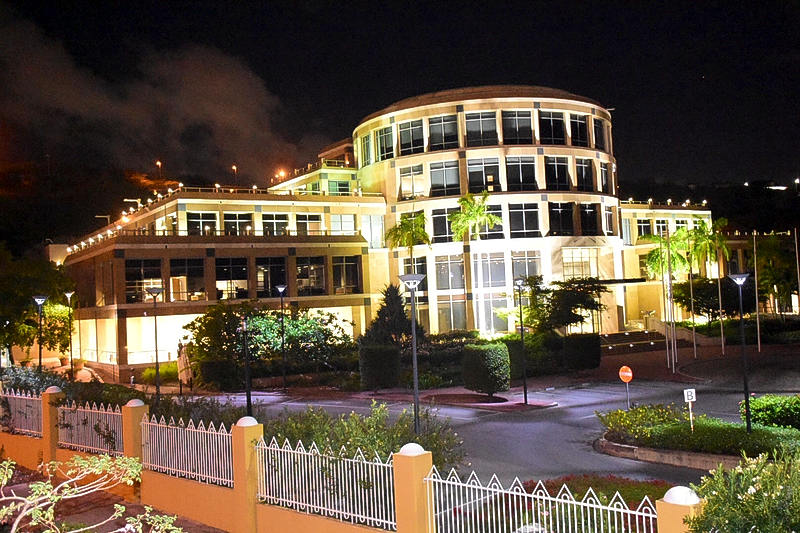ECONOMIC SACRIFICES OF THE LOCKDOWN ARE SUBSTANTIAL FOR CURAÇAO AND SINT MAARTEN
WILLEMSTAD.- The Centrale Bank van Curaçao en Sint Maarten (CBCS) has revised downwards its economic outlook for 2020 for Curaçao and Sint Maarten. In the previous projection, the CBCS calculated the impact of the closure of the borders for commercial flights and maritime traffic. Meanwhile, in the new projection, the CBCS has included the effects of a lockdown.
“The economies of Curaçao and Sint Maarten were already affected by the closure of the borders, but have basically come to a standstill as a result of the lockdown. Given the substantial economic sacrifices of the lockdown, efforts should be made to reactivate the economy in a responsible yet swift manner,” according to Dr. Jose Jardim, interim-president of the CBCS. The CBCS calculated in March the economic impact of the closure of the borders of Curaçao and Sint Maarten for commercial flights and maritime traffic. The adverse effects are considerable.

In the case of a border closure for a period of 3 months followed by a gradual recovery after reopening, Curaçao will register a real economic contraction of 14.9%. The CBCS has, however, revised this projection by 1.0 percentage point downward to -13.9% as the introduction of the General Consumption Tax (ABB) has not taken place anymore on April 1st, 2020. In the new outlook, the CBCS assumes that the ABB will be introduced on July 1st, 2020. The CBCS projected in March for Sint Maarten an economic contraction of 13.7% in 2020 if the borders remain closed for a period of 3 months followed by a gradual reopening.
This projection has been revised downward by 1.2 percentage point to -14.9%. In the meantime, the governments of both Curaçao and Sint Maarten have escalated the preventive measures. As a consequence, a 24-hour curfew or lockdown is currently in place in both countries. In Curacao, the measures are currently being gradually deescalated, while Sint Maarten has imposed a lockdown more recently. The economies of both Curaçao and Sint Maarten have basically come to a standstill as a result of the lockdown. Based on the scenario of a closure of the borders for a period of 3 months followed by a gradual recovery after reopening, the CBCS has calculated for both countries the impact of a lockdown for a period of 1 month, 2 months and 3 months.
“In the case of a total lockdown of 1 month, the economy of Curaçao will contract by 17.7%. The economic contraction could, however, reach 25.4% in the case of a lockdown of 3 months. The economy of Sint Maarten will also be severely affected by a lockdown with a contraction between 17,0% (lockdown of 1 month) and 21,1% (lockdown of 3 months)”, according to dr. Jardim. The CBCS explains further that the contraction in Curaçao is deeper than in Sint Maarten due to the higher inflation in Curaçao. In addition, before the COVID-19 crisis, the economy of Sint Maarten was projected to grow in 2020 while a contraction was forecasted for Curaçao. An inflation rate of 3.5% is projected for Curaçao while the inflation rate of Sint Maarten will reach 2.3%. “The higher inflation in Curaçao is caused by, among other things, the surcharge that the government introduced on oil products on March 1st and April 1st. Moreover, in the outlook it is assumed that the government will introduce the ABB on July 1st, 2020. The increase in inflation is, however, moderated by a strong decline in international crude oil prices. The higher inflation will reduce the purchasing power and worsen the country’s competitiveness”, Dr. Jardim states. “Sint Maarten, by contrast, will benefit from the drop in international crude oil prices leading to a lower inflation than in Curaçao”.
The interim-president emphasizes, however, that the economic projections are currently surrounded by extreme uncertainties. “The world is experiencing a pandemic that has resulted in a global economic crisis. Some of the downside risks to the current outlook include the development and duration of the pandemic, the pace at which the preventive measures will be lifted, and how demand will recover.”
In addition, the longer the preventive measures last, the greater the adverse effects on the economy will be. The adverse effects depend also on how fast the economy will recover. “The longer the lockdown lasts, the less the still operating economic activities are able – partly out of solidarity – to contribute to the halted economic activities and the less sustainable the government’s debt becomes. For this reason, efforts should be made to reactivate the economy in a responsible yet swift manner”, concludes Dr. Jardim.










